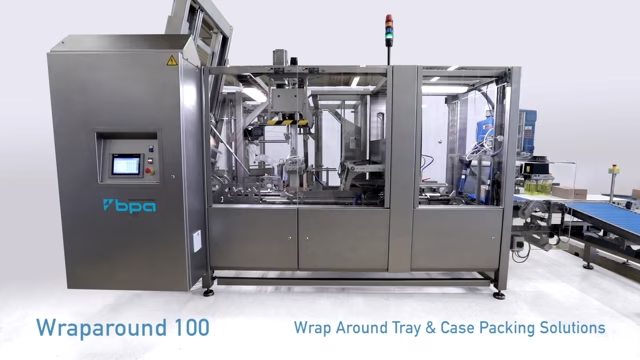Let’s work together
The possibilities are endless
Secondary packaging is the grouping of several individual items into a secondary container. Depending on your product this may also mean a single product into the container. Secondary packaging solutions are provided after your product has been packaged and is ready to be placed in the shipping container. With so many secondary automated packaging equipment options on the market, how do you know which one to choose?
Your solution will be based strictly on your needs. At BPA, factors such as product and package type, speed, number of recipes and pack patterns and more will be taken into consideration when determining a secondary packaging solution best for you. BPA has a diverse team of experts on hand to assist you through this process.
Products
- Gravity 100 Case Packer
- Gravity 100R Case Packer
- CubeMaster 200 Case Packer
- CubeMaster 200i Case Packer
- CubeMaster 300 Case Packer
- CubeMaster 300i Case Packer
- Gantry 100 Case Packer
- Gantry 200 Case Packer
- Gantry 200i Case Packer
- Gantry 300 Swing Case Packer
- Spider 100 Case Packer
- Spider 100i Case Packer
- Spider 200 Case Packer
- Spider 200i Case Packer
- Spider 300 Case Packer
- Spider V series
- Spider Q series
- Spider 300v Case Packer
- SnackMaster 200 Case Packer
- SnackMaster 200i Case Packer
- Wraparound 100
- Wraparound 200
- Wraparound 300
- Cartoner 100
- Cartoner 100c
- Variety Pack in Sack or Case
- Shaker-Compactor-Sealer (SCS)
- Collator 200 Semi Automatic Packing
- Bag in Bag Solutions - Jongerius Hanco
- Strip Sachet Machine - Jongerius Hanco
For these industries:
Wraparound 100
wrap around case packing for horizontal packing patterns
BPA offers excellent wrap around case packers. The Wraparound 100 is a highly flexible, modern, servo controlled horizontal case packer. It distinguishes itself with its unique Catamaran construction style. This versatile machine is able to produce different case styles, offering you a large size range. Changeovers can be automated by a motor driven system.
Built for a 24/7 production environment where performance and proven technology are of critical importance, the Wraparound 100 answers virtually any wrap around need. It can be expanded with modular infeed systems to handle most products, orientations and speeds. This uses a variety of well proven concepts such as lane dividers, stacking units, stacking belts, racetracks, elevators, aligners, turning stations, tilting units and more.

